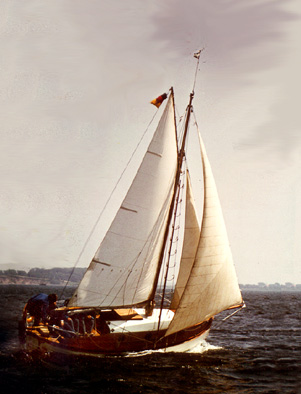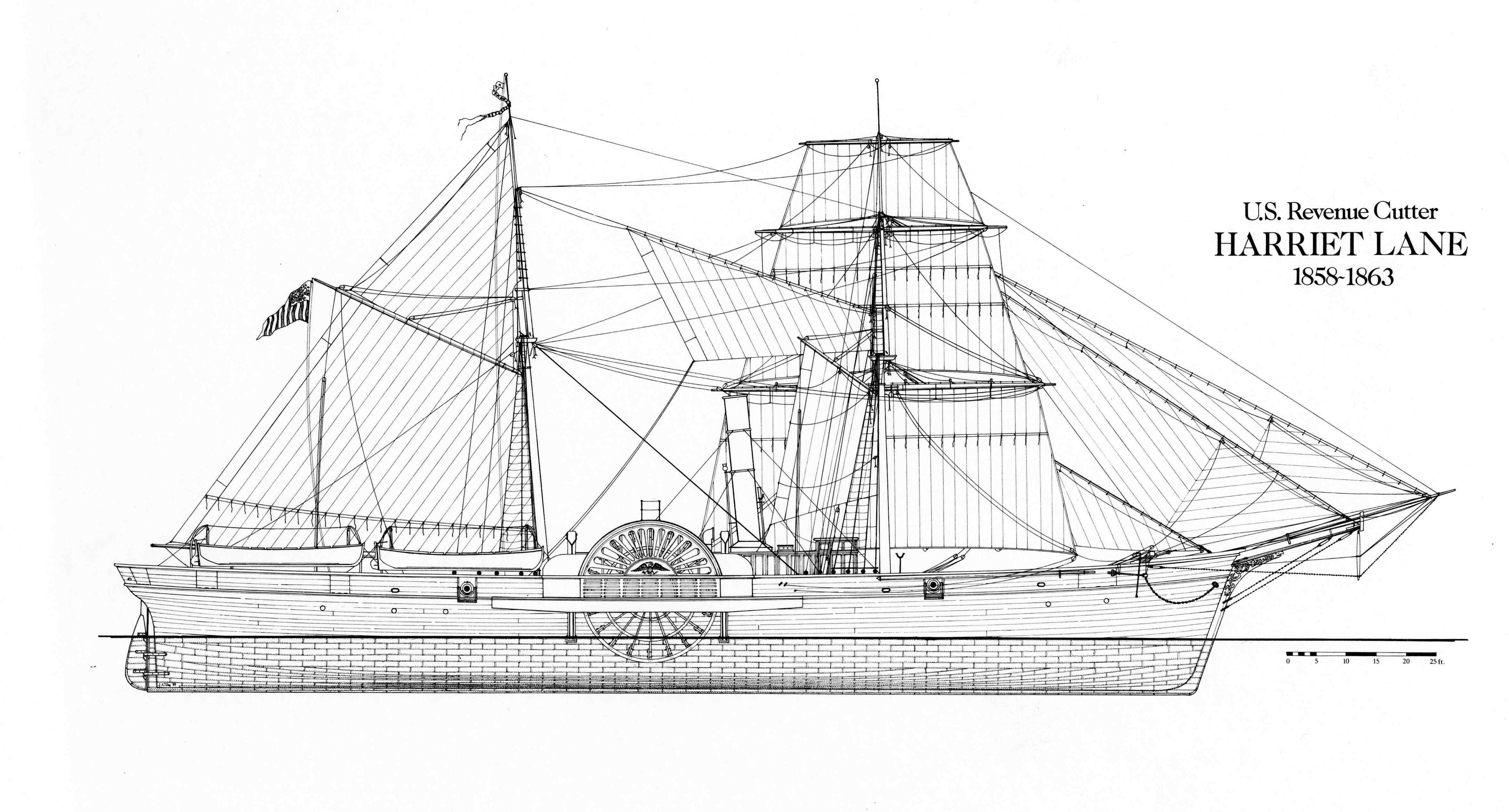|
CS Neptune
C.S. Army Tug ''Neptune'' (c. 1862–1863) was a wooden tugboat taken over by the Confederate States Army in about 1862 for the Texas Marine Department. She was employed as a tug, transport, and lookout vessel in the vicinity of Galveston, Texas. On 1 January 1863, during the Battle of Galveston, Confederate troops used her and the gunboat CS Bayou City, CS ''Bayou City'' in an effort to board and capture the United States Revenue Cutter Service revenue cutter USRC Harriet Lane (1857), USRC ''Harriet Lane''. Though the enterprise was a success, ''Neptune'' was badly damaged and sank shortly afterwards. References Ships of the Confederate States Army Tugboats of the United States Shipwrecks of the Texas coast Shipwrecks in the Gulf of Mexico Shipwrecks of the American Civil War Maritime incidents in January 1863 1860s ships {{AmericanCivilWar-ship-stub ... [...More Info...] [...Related Items...] OR: [Wikipedia] [Google] [Baidu] |
Revenue Cutter
A cutter is any of various types of watercraft. The term can refer to the rig (sail plan) of a sailing vessel (but with regional differences in definition), to a governmental enforcement agency vessel (such as a coast guard or border force cutter), to a type of ship's boat which can be used under sail or oars, or, historically, to a type of fast-sailing vessel introduced in the 18th century, some of which were used as small warships. As a sailing rig, a cutter is a single-masted boat, with two or more headsails. On the eastern side of the Atlantic, the two headsails on a single mast is the fullest extent of the modern definition. In U.S. waters, a greater level of complexity applies, with the placement of the mast and the rigging details of the bowsprit taken into account so a boat with two headsails may be classed as a sloop. Government agencies use the term "cutter" for vessels employed in patrolling their territorial waters and other enforcement activities. This terminol ... [...More Info...] [...Related Items...] OR: [Wikipedia] [Google] [Baidu] |
Shipwrecks Of The American Civil War
A shipwreck is the wreckage of a ship that is located either beached on land or sunken to the bottom of a body of water. It results from the event of ''shipwrecking'', which may be intentional or unintentional. There were approximately three million shipwrecks worldwide as of January 1999, according to Angela Croome, a science writer and author who specialized in the history of underwater archaeology (an estimate rapidly endorsed by UNESCO and other organizations). When a ship's crew has died or abandoned the ship, and the ship has remained adrift but unsunk, they are instead referred to as ''ghost ships''. Types Historic wrecks are attractive to maritime archaeologists because they preserve historical information: for example, studying the wreck of revealed information about seafaring, warfare, and life in the 16th century. Military wrecks, caused by a skirmish at sea, are studied to find details about the historic event; they reveal much about the battle that occur ... [...More Info...] [...Related Items...] OR: [Wikipedia] [Google] [Baidu] |
Tugboats Of The United States
A tugboat or tug is a marine vessel that manoeuvres other vessels by pushing or pulling them, with direct contact or a tow line. These boats typically tug ships in circumstances where they cannot or should not move under their own power, such as in crowded harbors or narrow canals, or cannot move at all, such as barges, disabled ships, log rafts, or oil platforms. Some are ocean-going, and some are icebreakers or salvage tugs. Early models were powered by steam engines, which were later superseded by diesel engines. Many have deluge gun water jets, which help in firefighting, especially in harbours. Types Seagoing Seagoing tugs (deep-sea tugs or ocean tugboats) fall into four basic categories: #The standard seagoing tug with model bow that tows almost exclusively by way of a wire cable. In some rare cases, such as some USN fleet tugs, a synthetic rope hawser may be used for the tow in the belief that the line can be pulled aboard a disabled ship by the crew owing to its ... [...More Info...] [...Related Items...] OR: [Wikipedia] [Google] [Baidu] |
Ships Of The Confederate States Army
A ship is a large vessel that travels the world's oceans and other navigable waterways, carrying cargo or passengers, or in support of specialized missions, such as defense, research and fishing. Ships are generally distinguished from boats, based on size, shape, load capacity and purpose. Ships have supported exploration, trade, warfare, migration, colonization, and science. Ship transport is responsible for the largest portion of world commerce. The word ''ship'' has meant, depending on the era and the context, either just a large vessel or specifically a ship-rigged sailing ship with three or more masts, each of which is square-rigged. The earliest historical evidence of boats is found in Egypt during the 4th millennium BCE. In 2024, ships had a global cargo capacity of 2.4 billion tons, with the three largest classes being ships carrying dry bulk (43%), oil tankers (28%) and container ships (14%). Nomenclature Ships are typically larger than boats, but there is no u ... [...More Info...] [...Related Items...] OR: [Wikipedia] [Google] [Baidu] |
USRC Harriet Lane (1857)
''Harriet Lane'' was a revenue cutter of the United States Revenue Cutter Service and, on the outbreak of the American Civil War, a ship of the United States Navy and later Confederate States Navy. The craft was named after the niece of senator and later United States President, James Buchanan; during his presidency, she acted as First Lady. The cutter was christened and entered the water for the Revenue Service in 1859 out of New York City, and saw action during the Civil War at Fort Sumter, New Orleans, Galveston, Texas, and Virginia Point. The Confederates captured her in 1863, whereupon she was converted to mercantile service. Union forces recaptured her at the end of war. The U.S. Navy declared her unfit for service and sold her. New owners out of Philadelphia renamed her ''Elliot Ritchie''. Her crew abandoned her at sea in 1881. Layout of the ship ''Harriet Lane'' measured 177.5 feet long, 30.5 feet wide and 12 feet from the bottom of the hull to the main deck. Her prop ... [...More Info...] [...Related Items...] OR: [Wikipedia] [Google] [Baidu] |
United States Revenue Cutter Service
The United States Revenue Cutter Service was established by an Act of Congress () on 4 August 1790 as the Revenue-Marine at the recommendation of the nation's first U.S. Secretary of the Treasury, Alexander Hamilton. The federal government body was initially created to serve as an armed customs enforcement service. Over time, however, the service gradually gained missions either voluntarily or by legislation, including those of a military nature. It was generally referred to as the Revenue-Marine until 31 July 1894, when it was officially renamed the Revenue Cutter Service. The Revenue Cutter Service operated under the authority of the U.S. Department of the Treasury. On 28 January 1915, the service was merged by an act of Congress with the United States Life-Saving Service to form the United States Coast Guard. Background Immediately after the American Revolutionary War, the newly-established United States struggled financially. The federal government desperately needed reve ... [...More Info...] [...Related Items...] OR: [Wikipedia] [Google] [Baidu] |
Tugboat
A tugboat or tug is a marine vessel that manoeuvres other vessels by pushing or pulling them, with direct contact or a tow line. These boats typically tug ships in circumstances where they cannot or should not move under their own power, such as in crowded harbors or narrow canals, or cannot move at all, such as barges, disabled ships, log rafts, or oil platforms. Some are ocean-going, and some are icebreakers or salvage tugs. Early models were powered by steam engines, which were later superseded by diesel engines. Many have deluge gun water jets, which help in firefighting, especially in harbours. Types Seagoing Seagoing tugs (deep-sea tugs or ocean tugboats) fall into four basic categories: #The standard seagoing tug with model bow that tows almost exclusively by way of a wire cable. In some rare cases, such as some USN fleet tugs, a synthetic rope hawser may be used for the tow in the belief that the line can be pulled aboard a disabled ship by the crew owing t ... [...More Info...] [...Related Items...] OR: [Wikipedia] [Google] [Baidu] |
CS Bayou City
C.S. Army Gunboat ''Bayou City'' (1861–1865) was a 165-foot side-wheel steamboat built for commercial use at Jeffersonville, Indiana, in 1859. Serving as a mail boat between Galveston and Houston, Texas, the ship was chartered on 26 September 1861 by Comdr. W. Hunter, CSN, commanding the Texas Marine Department, from the Houston Navigation Co. Military use The ''Bayou City'' was clad with pressed cotton for protection, armed with artillery and operated by the State of Texas as a gunboat in the Galveston area. Just over a year after its charter, in October 1862, she was taken over by the Confederate States Army. The Battle of Galveston On 1 January 1863, in what would come to be known as the Battle of Galveston, the improvised cotton-clad ''Bayou City'', captained by Henry S. Lubbock the brother of Texas governor Francis Lubbock, served as the flagship of a small fleet under the command of Major Leon Smith which also consisted of the tugboat and two smaller tenders, who suc ... [...More Info...] [...Related Items...] OR: [Wikipedia] [Google] [Baidu] |
Gunboat
A gunboat is a naval watercraft designed for the express purpose of carrying one or more guns to bombard coastal targets, as opposed to those military craft designed for naval warfare, or for ferrying troops or supplies. History Pre-steam era In the age of sail, a gunboat was usually a small undecked vessel carrying a single smoothbore cannon in the bow, or just two or three such cannons. A gunboat could carry one or two masts or be oar-powered only, but the single-masted version of about length was most typical. Some types of gunboats carried two cannon, or else mounted a number of swivel guns on the railings. The small gunboat had advantages: if it only carried a single cannon, the boat could manoeuvre in shallow or restricted areas – such as rivers or lakes – where larger ships could sail only with difficulty. The gun that such boats carried could be quite heavy; a 32-pounder for instance. As such boats were cheap and quick to build, naval forces favoured swarm ... [...More Info...] [...Related Items...] OR: [Wikipedia] [Google] [Baidu] |








